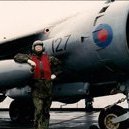Search the Community
Showing results for tags 'Graf Zeppelin'.
-
Graf Zeppelin 1:245 Hawk/Lindberg The design and construction of Graf Zeppelin were essentially conservative, based on tried-and-true technology developed over the Zeppelin Company’s decades of experience, and the ship was constructed of triangular Duralumin girders, with frames spaced 15 meters apart. The design of the Zeppelin was constricted by the size of the building shed at Friedrichshafen, which had inner dimensions of 787 feet in length and 115 feet in height. Since greater size meant greater efficiency in long distance operation, the challenge for Ludwig Durr and his design team was to create a ship with the largest possible gas capacity that could be built within the confines of the construction shed. Thus the airship that was designed was a cylinder 776ft in length and 100ft in diameter. The gondola, which was slung under the nose of the airship meant that the height of the airship from the bottom of the gondola to the top of the hull was 110ft. Whilst not the most aerodynamically efficient design it did incorporate one interesting feature, in the fuel used for powering the five Maybach VL-2 12-cylinder engines, which could develop 550hp at maximum revolutions, and 450 hp at 1400 RPM in cruise. This was the use of Blau Gas which had the same density as air so wouldn't upset the balance of the airship as the fuel was used, unlike more conventional fuels such as paraffin and diesel. This also gave the airship an extra 30 hours of flying time as the lifting Hydrogen gas didn't need to be expelled to keep the airship at the correct altitude. The use of Blau gas allowed the Graf Zeppelin to stay aloft for over 100 hours. The Graf Zeppelin had a career spanning nine years, and in that time made 590 flights and carried over 34,000 passengers without incident. She also carried out the first commercial and scheduled flights across the Atlantic, first around the world and even flew a scientific mission over the North Pole. Graf Zeppelin was over the Canary Islands on the last day of a South American flight from Brazil to Germany when it received news of the Hindenburg disaster in Lakehurst, New Jersey. Captain Hans von Schiller withheld the news from his passengers, and told them of the disaster only after the ship’s safe landing in Germany. Graf Zeppelin landed in Friedrichshafen on May 8, 1937, and never carried a paying passenger again. The ship made only one additional flight, on June 18, 1937, from Friedrichshafen to Frankfurt, where she remained on display — all her hydrogen removed — until she was broken up on the orders of Hermann Goering’s Luftwaffe in March, 1940, bringing to an end the era that these huge and graceful ships of the sky brought about. The Model The kit arrives in a very long and quite deep box with several pictures of the Graf Zeppelin on the front and sides. Even though it measures out at 38.5" or 97.8cm long there are very few parts, the two hull halves and a single sprue of quite hard white styrene, one sprue of nylon, apparently. There is also a single clear styrene part and a sealed bag for the included lighting equipment. Detail is naturally quite sparse by the very nature of the airship. The longerons of the hull and fins are quite prominent, perhaps a little over emphasised, but should look ok given a slight sanding down and under a coat of primer and Alclad or similar, in fact the kit is so big it might be better just to go to Halfords and get various shades of silver auto paint. There were apparently shape issues with the older kit and even though it says new tooling on the box there really isn't any evidence of this, so the incorrect cross-section is still there. The nylon parts are also pretty awful to work with whether gluing or filling so beware. Construction is very simple, much like the instructions which leave a lot to be desired. The hull halves have very large location pins and holes and they do give a very positive fit, (not shown in the photograph above, as I wanted to get it apart again), although it will still need some careful gluing and an extensive seam removal session. There is a small conical nose piece that's fitted to the bow. The four tail fins are each made of two halves and locate well into their slots. Again the longerons may need sanding down a bit. Unfortunately the balance horns, on the nylon sprue are completely the wrong shape, rather than being teardrop they should be and aerofoil shape. There are pictures of these on the interweb amongst many others than would prove useful for this build, or at least show up how many other problems there are in the kit. The engines and propellers are also moulded in nylon and as mentioned above are a real problem in assembling, filling and painting. Hawk probably thought it better to use nylon as it is stronger than styrene and as the pods stick out there is a likelihood of breakage. It would have been preferred if they were standard styrene and take the risk to be honest. The struts could always be replaced with brass rod instead. Brass rod will also be required for the fin bracing wires. Anyway the engine pods are in two halves and the propeller shaft is sandwiched between them. There are five in all, two on each side and the fifth on the centreline aft. They will also need bracing wire to complete. The main gondola is a three piece item, the gondola, a clear insert, which is actually very clear, and the gondola bottom. Into the gondola are the pilots controls station and a number of comfy chairs. It also houses the lighting cct. lights, switch, and 3v coin cell battery all included. The internals all fitted, painted and in the case of the lights, tested, the gondola is fitted into place. There is a small bumper parts that is then added to the underside. There are one of the girders, framework and other fittings that are visible in the real Graf Zeppelin in the gondola which is shame, but some enterprising modeller should be able to scratch build this if they like. The rest, as they say is up to the painting and getting the various shades of silver dope that is very noticeable on the real thing, not forgetting that this is a BIG kit. Decals The decal sheet contains the main name titles for the front hull, and registration numbers for the hull just above the rear engine pods on either side and on the upper fin. They are high density and the carrier film looks reasonably thin so should settle down well. It's a shame that decals weren't included for the later years of operation under the Luftwaffe, but there are aftermarket sheets that can provide the swastikas and a bit of colour matching for the paint. At least this version would have added some much needed colour the completed model. Conclusion This is certainly and interesting and impressive kit, if purely for its size. The hull problems cannot be easily sorted, but with the addition of some brass rod and strut it could be made into a good looking model and will look impressive, whether hung from the ceiling or or the stand provided, although a better one would be preferable. I can recommend it purely as something different, baring in mind the problems mentioned above. Review sample courtesy of
-
TopDrawings 96 Messerschmitt Bf.109T (9788366148888) Kagero Publishing via Casemate UK When Germany first laid down the ill-fated Aircraft Carrier DKM Graf Zeppelin in 1936, the question of its complement of aircraft was already settled. It would carry a variant of the Bf.109 as a fighter, and the doughty Ju.87 Stuka as its bomber complement, and as such was engineered with those airframes in mind, removing the need to have folding wings that add weight to any aircraft. The 109 was given the variant T for Träger, which mean Carrier in English. It had extended wings with larger flying surfaces, plus a tail-hook and catapult launch gear for taking off and landing on carriers. The T-1 was the first airframe to be completed, and underwent catapult tests before it was ordered in small numbers. With the cancellation of the carrier, those airframes were apportioned elsewhere, and a T-2 variant was created without the carrier specific components. Some of the T-1s were cross-graded to T-2 standard, which found their way to Norway with 11./JG 11, and when the carrier project was temporarily re-started it was decided that the T was outdated by then, so an alternative was sought. That too was re-assigned in a remarkable chronologically close case of history repeating itself, while the T-2s continued in service in Norway until mid-1944, after which time any remaining airframes were used as trainers. As far as we know none of them survived the war or the culling of Axis hardware that followed it, but if you extended the wings of a Bf.109E-4/N that you happened to have lying around with the DB601N engine, you’d be 90% of the way there. We have kits in some scales, with some minor manufacturers getting in on the act, showing that it's a fairly popular subject given the fact that it didn’t really see much service due to the to-and-fro with the carrier and the steady march of technology that rendered its basic airframe obsolete. The TopDrawings series majors on scale plans, which is the main thrust, but also includes a little background information, some pertinent profiles, and separate an A2 sheet printed on both sides with drawings of sub-variants of the aircraft. The book is written in English on the left of the page, with Polish on the right, which translates to top and bottom for the captions to the various drawings within. The book itself is bound in a card cover and has 20 pages, and the rear cover devoted to additional profiles of two 109T-2s. After the introduction, the first half of the plans show the prototypes from the V-series, E-0s, and some T-2s in 1:72. After this are the colour profiles with four pages of profiles of T-2s wearing some interesting high demarcation camo schemes with copious mottle applied to the sides. After the break there is another set of plans for the T-2 and T-1s in 1:48, including a number of top views that show off the elongated wingspan. Throughout the book, there are numerous smaller diagrams that show the aircraft from front and rear, although there are no scrap diagrams for weapons fits as it only saw limited service and trainer use. A few of the drawings show the aircraft with a long-range fuel tanks, and little else. Conclusion These books are essential for the modeller that enjoys comparing their models against scale plans, and wants them to be as accurate as possible, with the separate large-scale plans quite useful, especially if you model in 1:32 or have a big crack in the wall that could be hidden by posting the plans over it to enjoy. Recommended. Review sample courtesy of
-
Infini Model's latest release has been fairly well publicised on social media recently, but today it is ready. We've had quite a number of enquiries about this to so try to ensure people can get one ASAP we've decided to hold a "pre-order" for the sets: https://www.sovereignhobbies.co.uk/collections/infini-detail-up-set/products/im-535010r1-infini-model-dkm-graf-zeppelin-detail-up-set For those looking to improve on specific areas without the expense or work scope of the full detail up set, Infini Model have decided to supply sub-sets as follows: Graf Zeppelin aircraft set https://www.sovereignhobbies.co.uk/collections/dkm-graf-zeppelin/products/imp-35024r1-infini-model-1-350-graf-zeppelin-carrier-base-aircraft-set 20mm Flak Vierling c/35 (38) Set https://www.sovereignhobbies.co.uk/collections/dkm-graf-zeppelin/products/imp-35023r1-infini-model-dkm-20mm-flak-vierling-c-35-set Graf Zeppelin Turned Brass Barrels Set https://www.sovereignhobbies.co.uk/collections/dkm-graf-zeppelin/products/imp-35022r1-infini-model-dkm-graf-zeppelin-metal-barrels-set Graf Zeppelin Brass Mast Set https://www.sovereignhobbies.co.uk/collections/dkm-graf-zeppelin/products/ims-35001-infini-model-1-350-graf-zeppelin-brass-mast-set Graf Zeppelin Wooden Deck Set https://www.sovereignhobbies.co.uk/collections/infini-deck/products/imw-35006r1-infini-model-graf-zepplin
- 3 replies
-
- 1
-

-
- Graf Zeppelin
- Infini Model
-
(and 1 more)
Tagged with:
-
Due February at HobbyLink Japan: https://hlj.com/product/TRP05627 The real ship was never completed so I don't know how we judge this one for accuracy. Price is equivalent to US$125, which seems reasonable enough.
-
- 1
-

-
- graf zeppelin
- trumpeter
-
(and 1 more)
Tagged with:
-
I hope this fits the category aircraft. Finally, after 6 months of sacrificed spare time the Zeppelin is ready. It's been quite a journey that was intended to be a quicky, but soon transformed into a half scratch project. The kit is extremely basic and almost toy-like. The fuselage was not altered at all, but most details were scratch built, including the command gondola and stabilizors, flying surfaces et cetera. The main challenge was finding reliable sources for the work and I found about 700 pictures searching the net, but not many close ups. I will get back later with a more detailed account for those poor soules contemplating building this kit. And now off to the next BIG KIT, see the last picture 1/72 Saturn V by Dragon /Robert Lundin Aircraft Walkaround Center http://aircraftwalkaround.hobbyvista.com/





